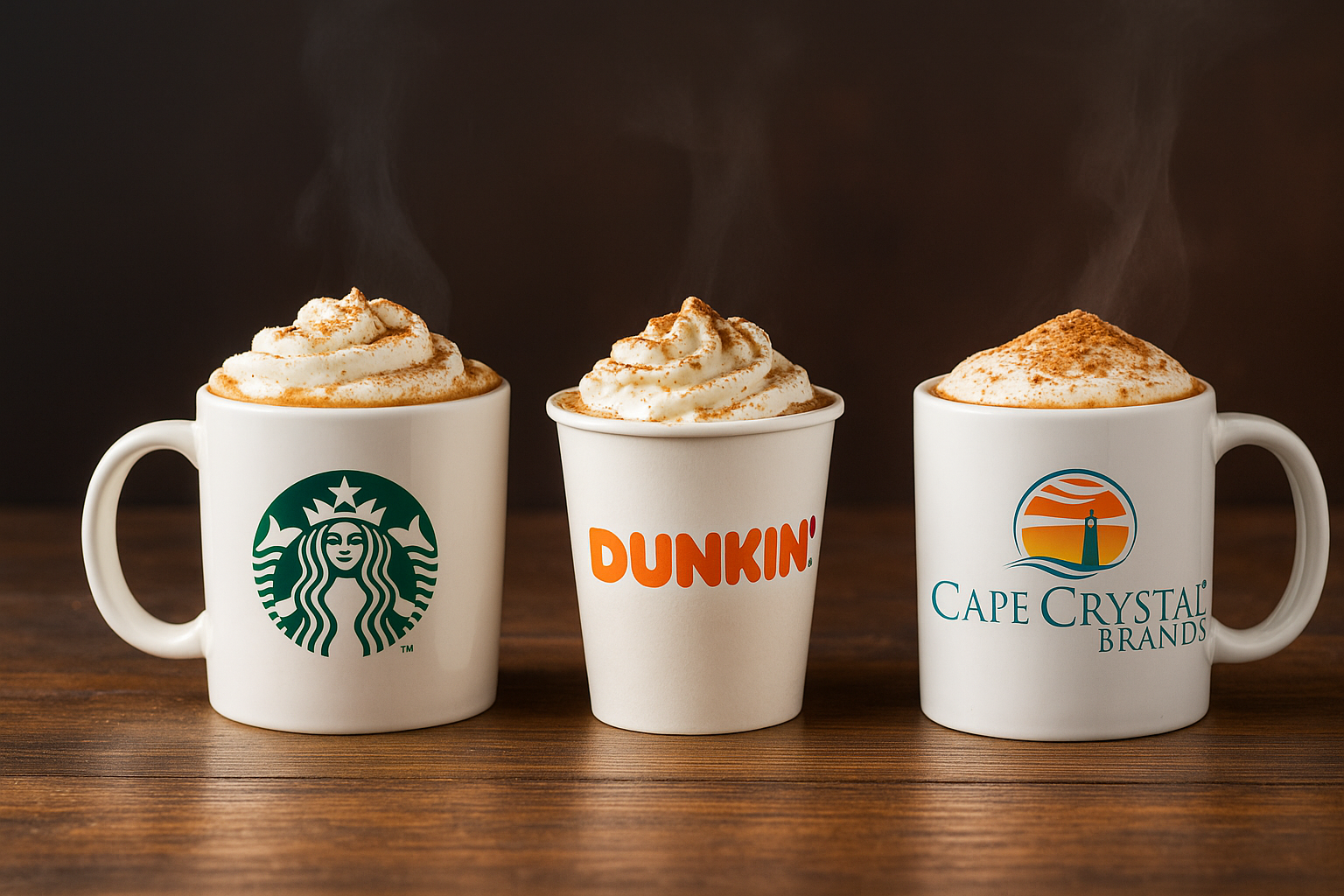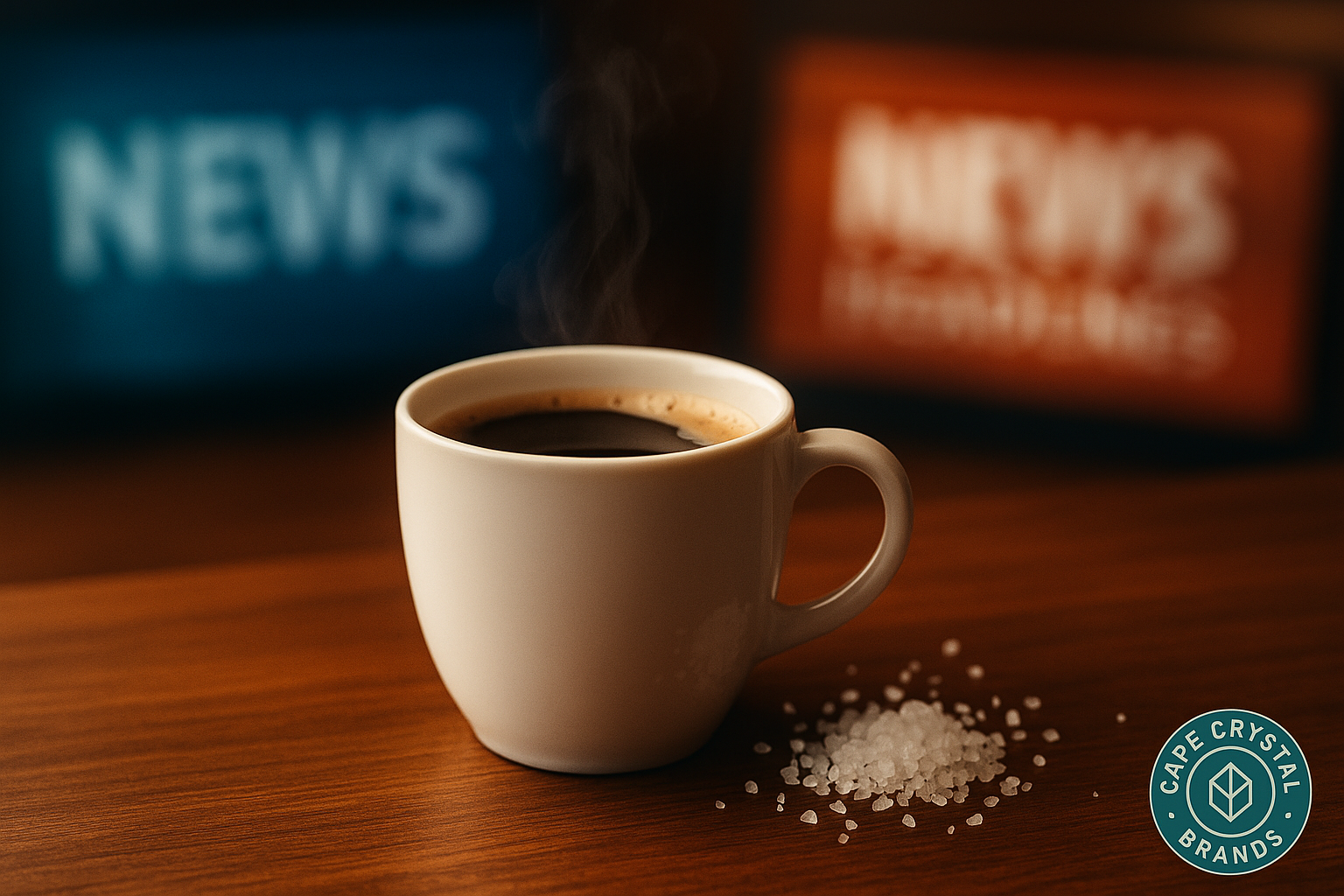Inside the Pumpkin Latte: What’s Really in Your Cup (and How to Make It Better at Home)
TL;DR: Big-chain pumpkin lattes rely on sweetened syrups. Make a cleaner version at home with real pumpkin, fresh spices, and full flavor control.
Few things signal fall like the first sip of a pumpkin latte. Coffee chains from Starbucks to Dunkin’ have turned this spiced drink into a cultural phenomenon—but what’s actually in it? And can you make a better version at home using real ingredients and a little food-science know-how?
The Big Three: Starbucks, Dunkin’, and Homemade Compared
| Brand | Base Ingredients | Pumpkin Source | Sweeteners & Additives | Approx. Calories (16 oz) | “Pumpkiny” Taste Comes From |
|---|---|---|---|---|---|
| Starbucks Pumpkin Spice Latte | Espresso, steamed milk, whipped cream | Real pumpkin purée in sauce | Sugars, condensed milk, natural flavors, preservative | ~390 | Cinnamon, nutmeg, clove, ginger (in syrup) |
| Dunkin’ Pumpkin Spice Latte | Espresso, milk, whipped cream, caramel drizzle | Natural & artificial flavoring | Sugar/HFCS in “pumpkin swirl” syrup | ~340 | Pumpkin-vanilla syrup + cinnamon sugar topping |
| Homemade (Cape Crystal Recipe) | Espresso, milk (or alt milk), optional whip | 100% pumpkin purée | Maple syrup or honey (you control the amount) | ~180–220 | Fresh spices: cinnamon, nutmeg, clove, ginger, allspice |
Takeaway: Café versions lean on sweetened syrups for consistency. Your homemade cup keeps the flavor real and the ingredient list short.
The Flavor Chemistry of Pumpkin Spice
What we recognize as “pumpkin” is largely the synergy of warm aromatic compounds—cinnamaldehyde (cinnamon), eugenol (clove), and sabinene (nutmeg). When gently heated with milk and a touch of sweetness, these aromas bind to milk fats and proteins, amplifying their cozy, lingering character.
Homemade Pumpkin Spice Latte (Cleaner & Fully Customizable)
Ingredients (1 serving)
- 2 oz strong espresso (or very strong brewed coffee)
- 8 oz milk of choice (whole, oat, almond)
- 2 Tbsp 100% pumpkin purée
- 1 Tbsp maple syrup or honey (adjust to taste)
- ¼ tsp (DIY blend below)
- Whipped cream (optional) + pinch of cinnamon to finish
Instructions
- Warm & whisk: In a small saucepan over medium heat, whisk milk, pumpkin purée, sweetener, and pumpkin spice until steaming.
- Combine: Pour espresso into a mug; add the spiced milk. Stir to marry flavors.
- Finish: Top with whipped cream and a pinch of cinnamon. Serve immediately.
Iced version: Let the mixture cool slightly, then pour over ice. For café-style texture, froth the milk before combining.
DIY Pumpkin Spice Blend (Small Batch)
Prefer to mix your own? This small batch fills one spice jar and works for lattes and baking.
- 4 tsp ground cinnamon
- 1 tsp ground nutmeg
- 1 tsp ground ginger
- ½ tsp ground allspice
- ½ tsp ground cloves
Mix well and store airtight. Use ¼ tsp per latte (adjust to taste) or 1 tsp per recipe for baking.
Why Your Homemade Version Wins
- Fewer additives: You control every ingredient—no hidden syrups.
- Lower sugar, same cozy flavor: Balance sweetness to your palate.
- Customizable: Choose your milk, ramp spices up or down, go hot or iced.
- Ingredient ethics: Source spices you trust from Cape Crystal.
Final Sip
The café pumpkin latte is a triumph of consistency and branding, but its soul is simple: warm spices, milk, coffee, and a hint of pumpkin. Make it at home and you’ll get full flavor with fewer additives—and a fall ritual that actually tastes like the real thing.
COMING SOON:
McCormick's new book on the science behind the foods you eat. This story echoes a larger truth explored in his upcoming book, The Food Questions America Is Asking, how journalists and scientists are rewriting our understanding of what we eat, one myth at a time.





